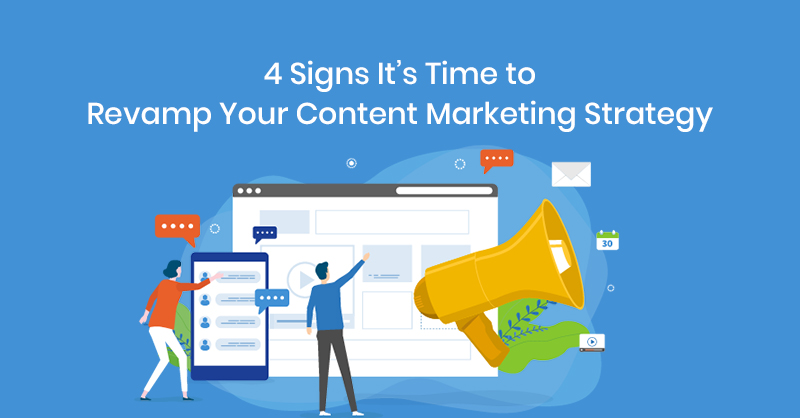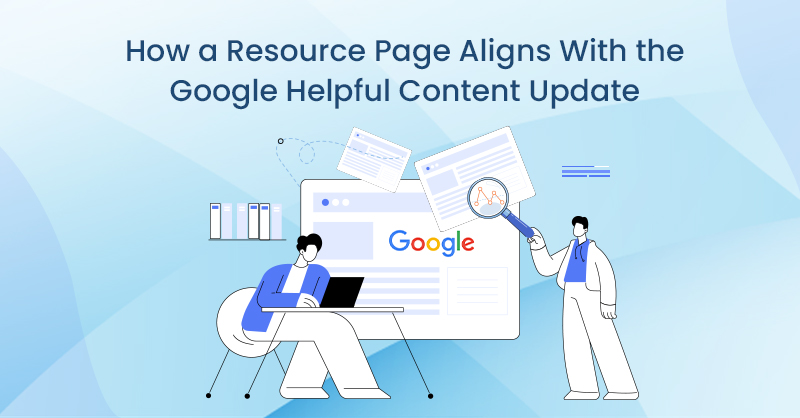Why is content marketing important?
Content is the fuel that drives the results of any online marketing campaign. The more content you have and the better it answers the questions of potential customers, the more traffic your website will attract, the higher you will rank on Google’s search engine results pages (SERPs for short), and above all, the more sales you will generate over time. Without content creation and distribution, it is going to be nearly impossible for customers to find your brand online if they have never heard of you before.
Content is vital to achieving your marketing goals, and a content marketing strategy is a way of organizing your content creation and distribution efforts. A good content marketing strategy will act as a detailed plan or roadmap for allocating resources in an efficient and targeted manner. It should also have an expected return on investment (ROI) and focus on achieving a SMART goal that your brand has set (SMART stands for; Specific, Measurable, Achievable, Relevant, Time-Bound).
By defining SMART goals for your content marketing strategy, like creating content that improves conversions by 15% within the next 6 months, you set a clear standard of success that your content strategy must reach, with data that can be easily measured to determine success or uncover why the strategy didn’t succeed.
Why should you revamp your content marketing strategy?

You may already have a pretty successful content marketing strategy in place, but in the ever-changing world of digital marketing, even the most successful strategies need to be optimized or tweaked at some point. Trends emerge and evolve, new competitors rise up, and new forms of content are constantly being developed and tested. Amidst this sea of change, a stagnate content marketing strategy will put your brand at a strategic disadvantage, one that will reduce your ability to generate leads and increase conversion as time goes on.
Having a plan in place to evaluate and optimize your content marketing strategies on a regular basis is crucial to ensuring your efforts do not go to waste. Here we are going to explore the 4 most common signs you should revamp your content marketing strategy:
1. Failure to meet goals
As we have already mentioned, setting SMART goals for your content marketing strategy (or any other digital marketing strategy for that matter) is a great way to ensure that all your efforts are entirely focused on reaching a specific goal (or goals) that benefit the brand.
One of the most obvious signs your content marketing strategy needs a revamp is if it fails to meet its goals. Since SMART goals are so specific and focused, there is much less ambiguity to sift through than you are trying to identify where your efforts fell short.
Did you set a goal that was too ambitious? Was your content marketing team not able to produce content at the quality needed to engage your target audience? Where timelines too short? Was there any accountability for your team to meet your goals while the strategy was in progress? These questions will be answered as you analyze the results of your content strategy and compare it with your SMART goals.
2. Stagnating or Declining Search Results
A big barometer is success in digital marketing is how many visitors you can draw from Google’s organic search results, and how high you rank for different keywords that are important to your business. Google’s search algorithm is always trying to find the best answers to user questions. It uses hundreds of different signals to determine how to rank different websites for different searches. Two key factors that it uses to calculate how different websites rank are relevance and authority.
Relevance refers to how well a website, or piece of content on that website, answers the questions being posed in a search query. Authority refers to the trustworthiness and thought-leadership of different websites to answer questions being searched for. Google wants to find content that answers questions AND is from a reputable source. The main way it determines this is via the content on each website.
If organic traffic and keyword rankings are not improving, it is a big sign that your content strategy needs to be changed. With competition ever-growing, you need to be able to not only provide detailed and accurate answers to questions, but you need to demonstrate and promote that your brand is a thought-leader in your industry. Possible changes to your on-page content like your website copy can be found by simply comparing your website’s content to the highest-ranking competitors or even your best-performing content with your worst.
To compare off-page content effectiveness, more investigative work will be needed, and you may need to use tools like Ahrefs or SemRush to find actionable insights. Some things to look for include where your competitors get backlinks from, whether that be from guest posting, link insertions, or just high-quality content that bloggers like to link to. Some competitors may have specific tools and other forms of interactive content that naturally attract backlinks, others may do a better job of breakdown complex information or simply appear as a more trustworthy source of information.
With declining or stagnating search results, you will need to do some competitive analysis to find out what gaps your content has with the highest-performing competitors for the same target keyword, and revamp your content marketing strategy to reduce those gaps.
3. Low Social Media Growth
Social media is a good barometer of the effectiveness of your content. A good content marketing strategy will incorporate a wide range of social media platforms as a means of distributing content as well as building rapport with consumers.
If your content marketing strategy has not improved social media reach or engagement then you need to rethink your content marketing strategy. You need to consider the timing of your posts, as your target audience may have specific times they use social media that do not align with your postings.
You also need to think about why your content is not engaging users. Effective content demonstrates your thought leadership in your industry while peaking the interest of your target audience. It should effectively shape the minds of consumers and encourage them to trust your brand. If your content is failing to achieve these goals, you need to think about how you can better distribute it to reach more people and what kinds of content your target audience is engaging with the most.
A common flaw of most content marketing strategies is spending too much time and effort creating promotional content. For the record, there is nothing wrong with creating content that promotes the good work the brand is doing, highlighting its products or services, or past customers that were well-served. The mistake that most brands make is focusing too much on promotional content and not enough on engaging their target audience.
The golden rule of content marketing, especially on social media is to have 80% of your content entertaining, informing and engaging your target audience, while only 20% should be promotional and about your brand. If you want consumers to follow your brand and interact with your posts, and think of you when they need products or services, you need to ensure your content marketing strategy is creating engaging content that adheres to the interests of your target audience.
Many social media platforms have other analytics tools to help businesses and professional brands track their social media engagements and learn more about their followers. Use these tools on a regular basis to monitor the results of your content marketing on social media, and highlight any significant uptick or downtrend aligned with the type of content posted for that time period. If your data is showing a declining or stagnating follower count, likes, comments, retweets, shares etc, you need to reevaluate your content marketing strategy.

4. Low Conversions
A conversion is a positive action or event that a visitor takes on your website. It could be a phone call to your sales team, a subscription to your newsletter, or buying a product. Conversions are often seen as the last stage of the marketing funnel, the final action being taken that all your marketing efforts have carefully nudged a prospect into making.
Your content marketing strategy may drive more traffic to your website, but traffic alone is a vanity metric. Your content marketing can drive 10 times, or even 20 times more traffic to your website, but how many of those new visitors turned into paying customers? That is the real measure of success. If your content marketing strategy is not growing our conversions or improving conversion rates, it is not a successful strategy.
Improving brand awareness and trust are great goals to have, but if they are not increasing the number of consumers willing to purchase from your store or contact your sales team, are they really helping you reach success? These factors should be aiding your conversions, helping influence consumers to make a decision that leads to them converting.
In other words, conversions are the lifeblood of your brand as they directly affect the bottom line. Failing to improve conversions renders much of your content strategy moot. A content marketing strategy that does not increase conversions or improve the total conversion rate must be reevaluated and optimized.
How to Start Optimizing Your Content Marketing Strategy
Imitation is the greatest form of flattery. If you are not sure how to start improving your content marketing strategy, check out what your top competitors are doing. Make a list of the different social media channels they use to distribute content and for each channel, and take note of the different types of content they create, as well as some relevant statistics on their performance. Use this list to figure out what kinds of content they are posting is having the greatest impact so you can create similar content for your accounts.
You can repeat this process for your top competitors for a given keyword. Pick a keyword that is very important to your brand, then find 3-5 of the top-ranking competitors for that keyword. Compare the quality of their on-page content, including the title, headings, the tone of the content, its readability, the length of the content, as well as any specific design features that make the information easier to understand and/or more visually appealing.
If you use any online marketing tools, you should take note of how many backlinks each competitor page gets, how many domains are linking to those pages, and what kind of anchor text is used. All of these factors impact how high Google ranks a website in organic search. The more backlinks you can acquire, from authoritative websites, and with keyword-related anchor text, the more authoritative Google will view your page and the higher it will rank in Google search. By checking how many and where your competitors pages get backlinks, you can better identify what elements of their content are drawing those backlinks, and what strategies you can adopt to get the attention of publishers and bloggers for backlinks to your content.
This method will give you a good benchmark for what your page needs to rank 1st for that keyword. Repeat this process for a few of your most important keywords to identify what strengths you can adopt from your competitors with the best SEO.
For more information on how to create a strong content marketing strategy, check out our article How to Create Powerful Content Marketing Strategies! Here at TechWyse, we understand that every brand needs a unique content marketing strategy catered to its specific target audience. We can create targeted content marketing strategies with high-quality content that help increase brand awareness, grow brand trust, drive traffic to your website, and turn that traffic to turn into loyal customers. For information on how you can revamp your content marketing strategy, call TechWyse Internet Marketing at 416-410-7090, or send us a message by filling out the form on our website. With our help, your brand can produce content that achieves your goals.






